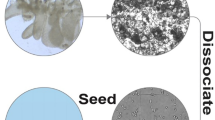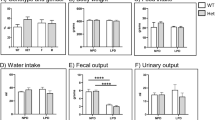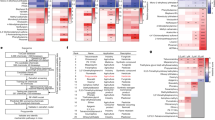Abstract
Aim:
Imperialine is an effective compound in the traditional Chinese medicine chuanbeimu (Bulbus Fritillariae Cirrhosae) that has been used as antitussive/expectorant in a clinical setting. In this study we investigated the absorption characteristics of imperialine in intestinal segments based on an evaluation of its physicochemical properties.
Methods:
Caco-2 cells were used to examine uptake and transport of imperialine in vitro, and a rat in situ intestinal perfusion model was used to characterize the absorption of imperialine. The amount of imperialine in the samples was quantified using LC-MS/MS.
Results:
The aqueous solubility and oil/water partition coefficient of imperialine were determined. This compound demonstrated a relatively weak alkalinity with a pKa of 8.467±0.028. In Caco-2 cells, the uptake of imperialine was increased with increasing pH in medium, but not affected by temperature. The apparent absorptive and secretive coefficient was (8.39±0.12)×10−6 cm/s and (7.78±0.09)×10−6 cm/s, respectively. Furthermore, neither the P-glycoprotein inhibitor verapamil nor Niemann-Pick C1-Like 1 transporter inhibitor ezetimibe affected the absorption and secretion of imperialine in vitro. The in situ intestinal perfusion study showed that the absorption parameters of imperialine varied in 4 intestinal segments (duodenum, jejunum, ileum and colon) with the highest ones in the colon, where a greater number of non-ionized form of imperialine was present.
Conclusion:
The intestinal absorptive characteristics of imperialine are closely related to its physicochemical properties. The passive membrane diffusion dominates the intestinal absorption of imperialine.
Similar content being viewed by others
Log in or create a free account to read this content
Gain free access to this article, as well as selected content from this journal and more on nature.com
or
References
Ministry of Public Health of the People's Republic of China. Pharmacopoeia of the people's republic of China. Beijing: China Medical Science Press 2010; vol I, p 34.
Wang D, Zhu J, Wang S, Wang X, Ou Y, et al. Antitussive, expectorant and anti-inflammatory alkaloids from Bulbus Fritillariae Cirrhosae. Fitoterapia 2011; 82: 1290–4.
Liu G, Franssen E, Fitch MI, Warner E . Patient preferences for oral versus intravenous palliative chemotherapy. J Clin Oncol 1997; 15: 110–5.
Lin Q, Zhang Q, Song X, Gong T, Sun X, et al. Novel LC-MS/MS method for analyzing imperialine in rat plasma: development, validation, and application to pharmacokinetics. J Chromatogr B 2013; 938: 51–9.
Winne D . Shift of pH-absorption curves. J Pharma Biopharm 1977; 5: 53–94.
Artursson P, Palm K, Luthman K . Caco-2 monolayers in experimental and theoretical predictions of drug transport. Adv Drug Deliv Rev 2001; 46: 27–43.
Dai JY, Yang JL, Li C . Transport and mrtabolism of flavonoids from Chinese herbal remady Xiaochaihu-tang across human intestinal caco-2 cell monolayers. Acta Pharmacol Sin 2008; 29: 1086–93.
Gan LSL, Thakker DR . Applications of the Caco-2 model in the design and development of orally active drugs: elucidation of biochemical and physical barriers posed by the intestinal epithelium. Adv Drug Deliv Rev 1997; 23: 77–98.
Zhang X, Qiu F, Jiang J, Gao C, Tan Y . Intestinal absorption mechanisms of berberine, palmatine, jateorhizine, and coptisine: involvement of P-glycoprotein. Xenobiotica 2011; 41: 290–6.
Park SW . Intestinal and hepatic niemann-Pick C1-Like 1. Diabetes metab J 2013; 37: 240–8.
Rodrigues AC, Curi R, Genvigir FDV, Hirata MH, Hirata RDC . The expressions of efflux and uptake transporters are regulated by statins in Caco-2 and HepG2 cells. Acta Pharmacol Sin 2009; 30: 956–64.
Högerle ML, Winne D . Drug absorption by the rat jejunum perfused in situ. Naunyn Schmiedeberg Arch Pharmacol 1983; 322: 249–55.
Shiau YF, Fernandez P, Jackson MJ, McMonagle S . Mechanisms maintaining a low-pH microclimate in the intestine. Am J Physiol 1985; 248: G608–17.
Zhang QY, Wikoff J, Dunbar D, Kaminsky L . Characterization of rat small intestinal cytochrome P450 composition and inducibility. Drug Metab Dispos 1996; 24: 322–8.
Chiou WL, Barve A . Linear correlation of the fraction of oral dose absorbed of 64 drugs between humans and rats. Pharm Res 1998; 15: 1792–5.
Ministry of public health of the people's republic of China. Pharmacopoeia of the people's republic of China. Beijing: China Medical Science Press 2010; vol II (Appendix), p 176–7.
Takács-Novák K, Avdeel A . Interlaboratory study of log P determination by shake-flask and potentiometric methods. J Pharm Biomed Anal 1996; 14: 1405–13.
Natoli M, Leoni BD, D'Agnano I, D'Onofrio M, Brandi R, et al. Cell growing density affects the structural and functional properties of Caco-2 differentiated monolayer. J Cell Physiol 2011; 226: 1531–43.
Artursson P, Karlsson J . Correlation between oral drug absorption in humans and apparent drug permeability coefficients in human intestinal epithelial (Caco-2) cells. Biochem Biophys Res Commun 1991; 175: 880–5.
Artursson P, Palm K, Luthman K . Caco-2 monolayers in experimental and theoretical predictions of drug transport. Adv Drug Deliv Rev 2012; 64: 280–9.
Guan ZY, Zhang LH, Chen LH, Zhu WF, Liu HN . Rat intestinal absorption trait of peimine and peiminine in Thunberg fritillary bulb extract. Yao Xue Xue Bao 2013; 48: 1836–43.
Acknowledgements
We are grateful for support from the National Basic Research Program of China (No 2013CB932504) and the National Natural Science Foundation of China (No 81130060).
Author information
Authors and Affiliations
Corresponding author
Additional information
Supplementary information is available at website of Acta Pharmacologica Sinica's website.
Supplementary information
Supplementary Information S1
Development and validation of the method detecting pKa (DOC 140 kb)
Supplementary Information S2
Stability of imperialine in cell test solution and SPIP test solution (DOC 43 kb)
Rights and permissions
About this article
Cite this article
Lin, Q., Ling, Lq., Guo, L. et al. Intestinal absorption characteristics of imperialine: in vitro and in situ assessments. Acta Pharmacol Sin 36, 863–873 (2015). https://doi.org/10.1038/aps.2015.27
Received:
Accepted:
Published:
Issue date:
DOI: https://doi.org/10.1038/aps.2015.27
Keywords
This article is cited by
-
Promoting oral absorption of Panax notoginseng saponins via thiolated trimethyl chitosan and wheat germ agglutinin–modified nanoformulation
Drug Delivery and Translational Research (2024)
-
A distinction between Fritillaria Cirrhosa Bulbus and Fritillaria Pallidiflora Bulbus via LC–MS/MS in conjunction with principal component analysis and hierarchical cluster analysis
Scientific Reports (2023)



